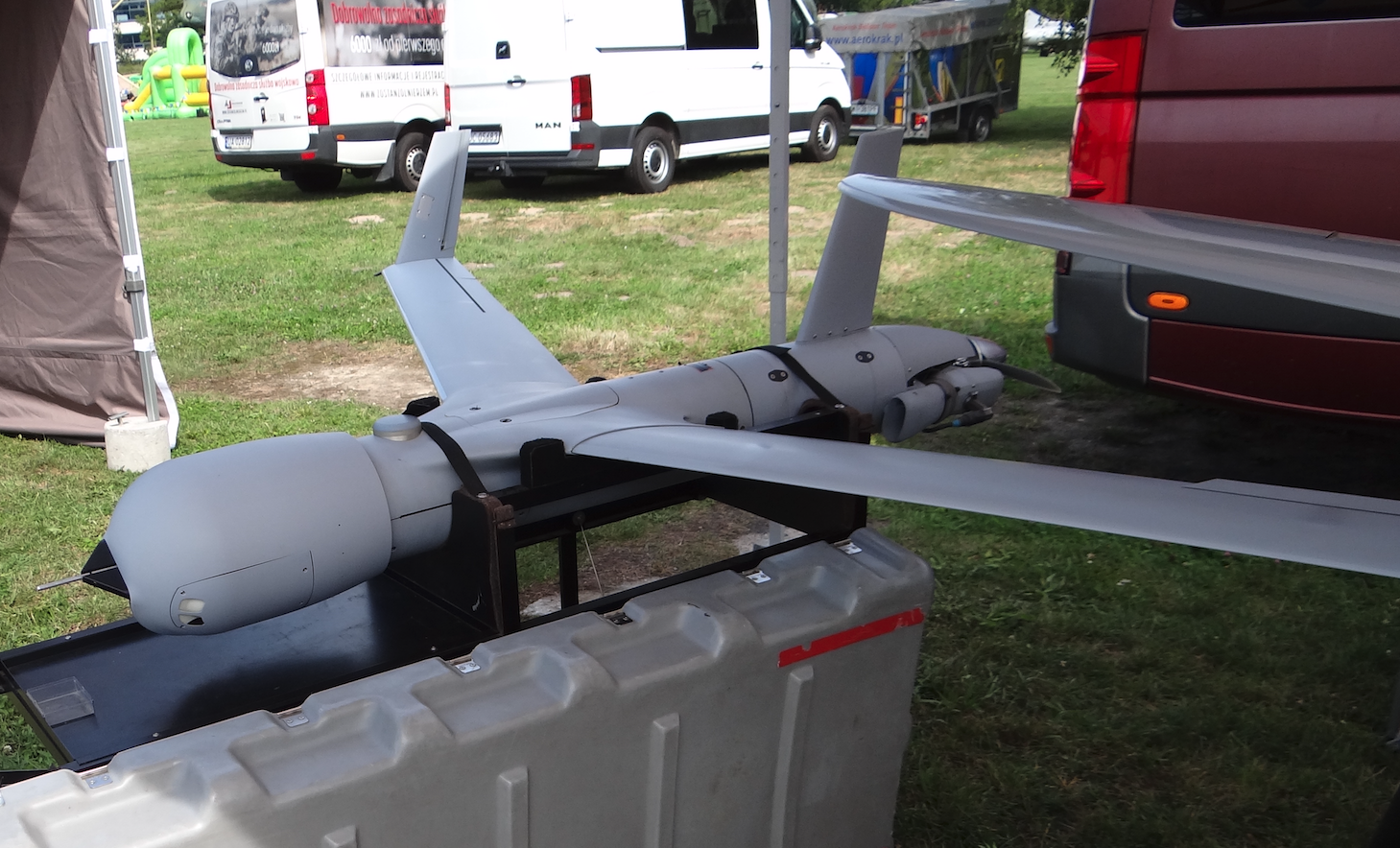Kraków 2025-05-09
Boeing Insitu MQ-27 ScanEagle.
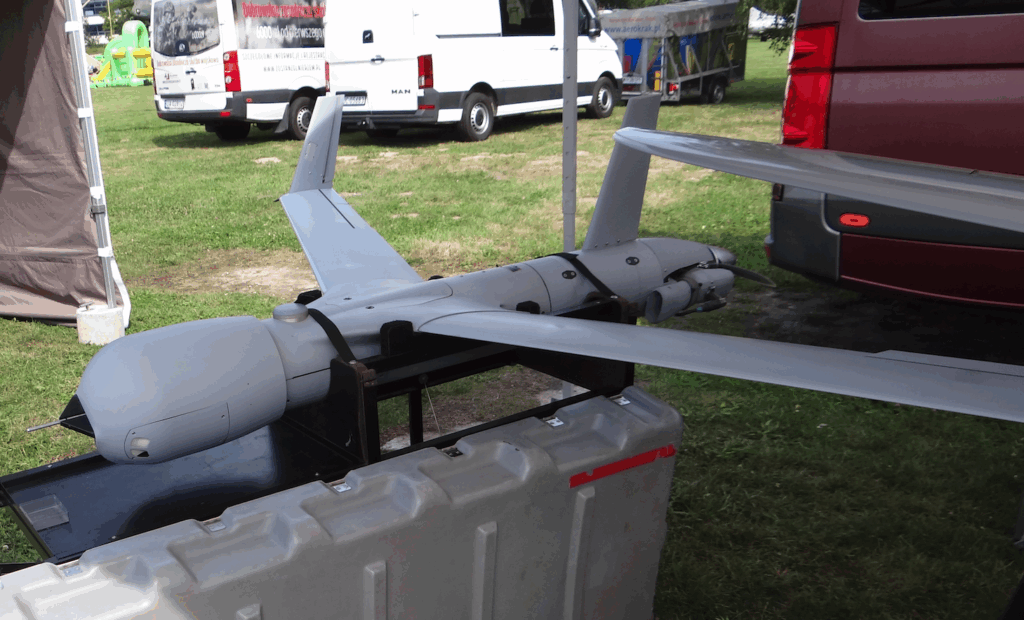
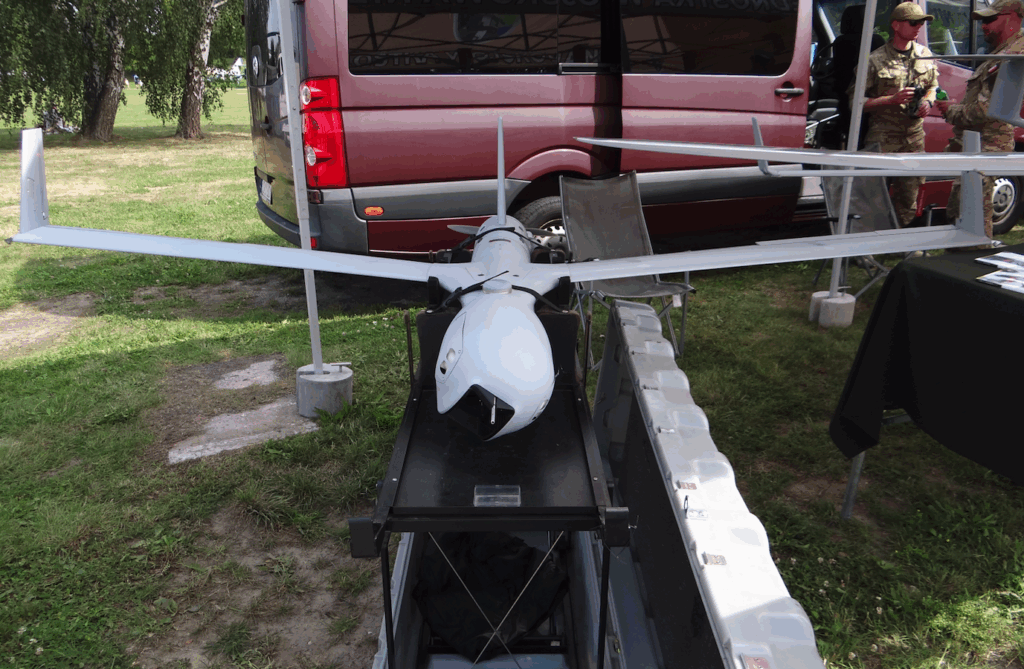
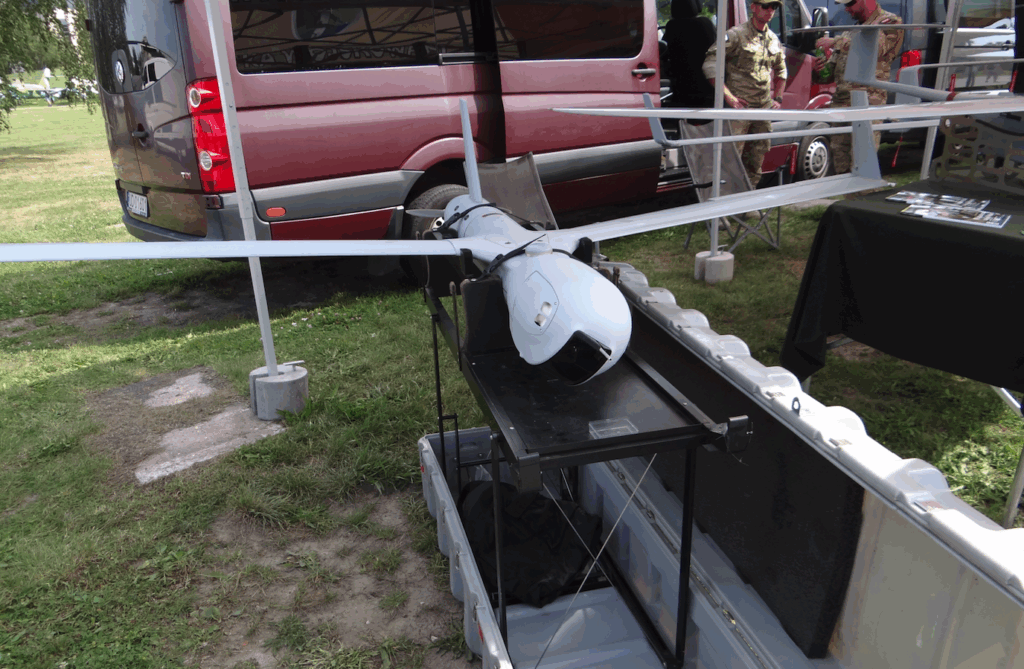
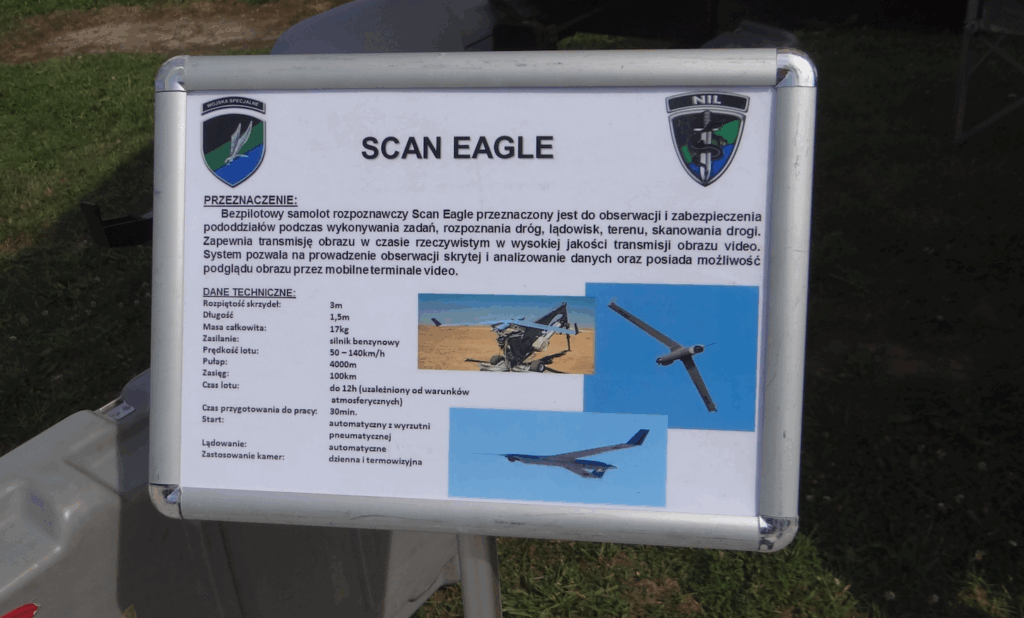
Boeing Insitu ScanEagle is an Unmanned Aerial Vehicle developed in the USA by Insitu and Boeing. The drone was built of composite and is powered by a 0.97 kW internal combustion piston engine. The engine drives a pusher propeller. Boeing Insitu ScanEagle made its first flight on June 20, 2002. In 2005, the drone was introduced into the US Army. Drones entered the armament of the USA, Australia, Canada, Poland.
At the end of the 90s of the 20th century, the first version of the drone, called SeaScan, was developed by Insitu. The drone was used to monitor the weather and locate schools of fish. After the tender for the army was decided, the drone was designated for further development. According to American regulations, Insitu had to establish cooperation with any large arms concern. A joint venture of Insitu and Boeing Defense, Space & Security was established. In 2008, Insitu was purchased by Boeing. The new drone was adapted to perform tasks for the army. A new coded link was used. The cameras were changed.
The BAL Boeing Insitu ScanEagle was developed as a tailless drone with a long swept wing. A piston engine was placed in the rear of the fuselage, which drives a two-blade pusher propeller. A stabilized head with observation equipment is mounted in the front of the BAL. The device is equipped with a high-resolution television camera and a thermal imaging camera. The drone can perform a wide range of tasks. The drone can be controlled by an operator or fly along a planned route. A GPS receiver is used for this type of flight. The drone is equipped with a Guidestar 111 flight control system. The ScanEagle drone takes off from a pneumatic catapult, which gives it a speed of 25 m/s. BAL lands using a device called Skyhook. This is a 15-meter-high mast to which a rope is attached that catches the drone. The drone hangs attached by the tip of the wing.
Polish Army.
In November 2009, the Polish side began negotiations with the manufacturer of the devices, aimed at acquiring them in the form of leasing, with an option to purchase. The negotiations began as part of the so-called urgent operational need. In February 2010, one ScanEagle set was purchased, consisting of 10 BAL devices. At the turn of 2010/2011, the drones were sent to Afghanistan. Poland was the first country in Europe to become both a user and owner of the system. The American side helped with the purchase, using one of the aid programs for allies. The first user of drones in the Polish Army was the Special Unit “Nil”.
T-T data Boeing Insitu MQ-27 ScanEagle:
Composite construction. Internal combustion engine, with a power of 0.97 kW. Wingspan 3.10 m. Length 1.20 m. Fuselage diameter about 0.25 m. Empty weight 12 kg. Payload 2 kg. Takeoff weight 18 kg. Fuel weight 4.3 kg. Maximum speed 130 km/h. Cruise 90 km/h. Operational ceiling 5,000 m. Flight time up to 20 hours. Maximum takeoff weight 62 lb / 28 kg. Maximum payload weight 17 lb / 8 kg. Length 5.6 ft / 1.71 m. Wingspan 10.2 ft / 3.1 m. Electro-optical (EO) camera. Medium-wave infrared and EO for day and night operations. Artificial intelligence support for wide area maritime search. Synthetic Aperture Radar (SAR): MMTI/GMTI, CCD. Laser rangefinder, laser pointer and laser designator options. EW System: Radio-electronic warfare. AIS System: Seagoing vessel identification. Alternative navigation (Alt-Nav). Video data link: analog, digitally encrypted. C2 data link: encrypted, unencrypted. Ceiling 19,500 ft / 5,950 m. Maximum speed 80 knots / 41.2 m/s. Choice of two piston engines. One for heavy fuel JP-5 or JP 8, the other engine for automotive gasoline C-10.
Written by Karol Placha Hetman

